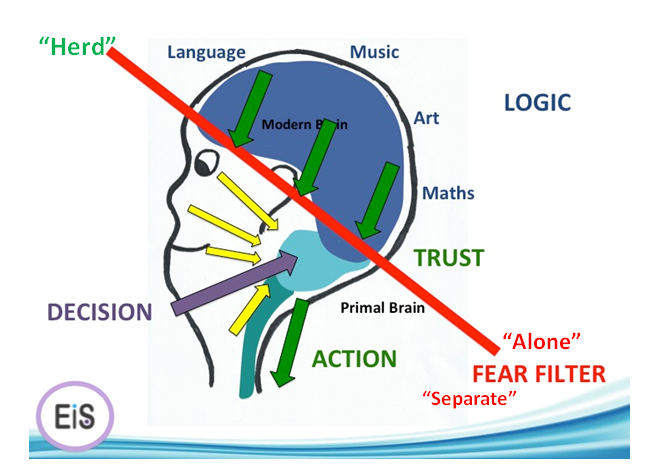Having started in previous posts to talk about the role of fear and trust in selling, we now introduce two additional concepts; “herd” and “separate”. The Herd response signifies safety in numbers and falls into the trust side of the decision making process as they keep as safe. Much as media use the term “following the herd” as a negative concept it is fundamental to our nature as we as humans are, after all, herd animals.
The alternative to being part of the herd is to be “alone” and “separate”. Being separated is scary for most of us as humans; we only have to see psychology experiments which confine people in rooms to see how much it really affects us. Being alone and separate heights our fear response and subsequently triggers our expectations of danger or death. This heightened anxiety is no state for calmly making commercial buying decisions or splurging out on personal luxuries.
How does this relate to the commercial world? Being part of the “herd” is about staying with the majority, doing the things the majority are doing and definitely buying the things that the majority are buying. There are only a few brave souls who are able to explore uncharted territory, implement unproven technologies or make decisions without regard to the opinions and reactions of their peers. There may be a reasonable number of people showing interest in new products but few will take action and buy them while they are in the minority.
Obviously then, when making sales, you want your prospects to feel the comfort and safety of staying in the “herd” and keep them miles and miles away from this dangerous “alone” and “separate” zone where they associate themselves, or you, with danger during your sales call.
The first issue in the safety of the herd is whether they perceive you to be a trusted member of their herd or an outsider. Do you clearly belong to a herd they expect for the product you represent? Or do you appear as an obvious outsider of their herd or any they want to relate to? Your membership of the herd can be about simple appearances and dress code or it could be about the content of your conversations. Are you making them feel like they belong to a safe herd when they are talking with you? Or are you talking about things that are unknown and are trying to draw them away from what is known and safe?
Making prospects feel safe buying your service or product is easier if your product is well established with many testimonials, great client case studies or endorsements from people they trust and admire. As the old advertising said “no one ever got fired for buying IBM”. Getting fired is definitely a commercially dangerous outcome to be avoided by clients.
However if you’re selling something new to your market, no matter it’s obvious revolutionary benefits you are effectively asking your prospects to make a stance alone by taking the risk of a new product. To achieve the sale you will need to develop much more trust on other issues to compensate for the lost sense of safety being alone in a new market will trigger for them.
Stay tuned for our next installment about what motivates people to make decisions to change their current state including making decisions to buy new products.

